Paradoxically, the birthplace of ancient civilisations, Turkey (Türkiye), has just turned 100 years old in 2023. This Eurasian getaway had always been a beacon of the region and had been shaped by the Byzantine Empire, Ancient Greeks and Romans, Alexander the Great, Seljuks, and mainly the Ottoman Empire. The latest incarnation of the country was formed by the national liberator Mustafa Kemal Atatürk, whose persona determines contemporary Turkish nationality, even if his reforms were reformed a little bit later. In 1922, the Ottoman Empire fell, and a secular republic rose through the heroic endeavours of Atatürk, cancelling the discrimination based on sex, religion, and monarchy.
The Cradle of Ancient Civilisations
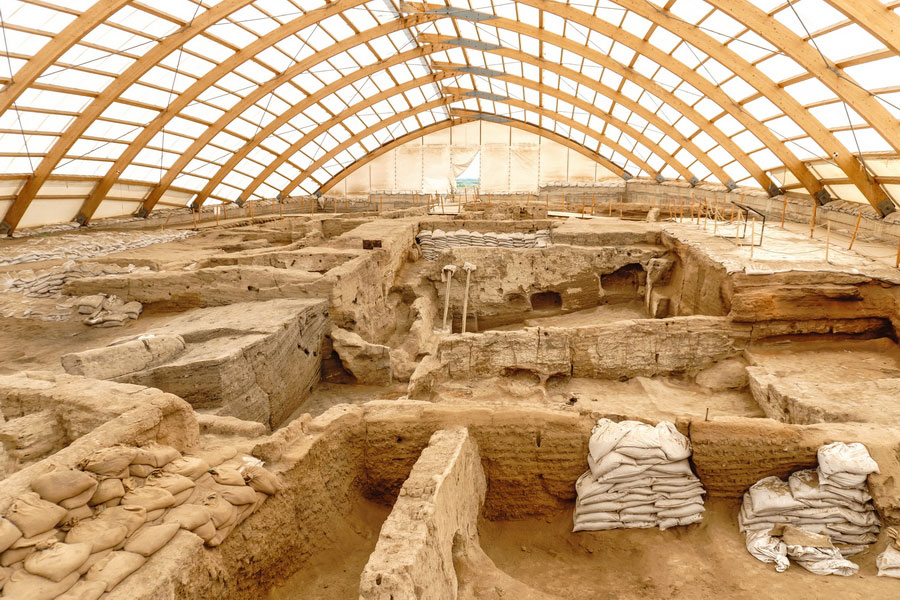
If one were to trace the story of humankind, Turkey might appear as its beating heart. The stories of the past are written across this land, from Çatalhöyük—the earliest known human settlement (circa 6500 B.C.)—to the majestic brilliance of the Ottoman Empire. Here, civilisations thrived, fought, and left behind legacies that structured the world.
Hittites

Had you visited Anatolia in 1750 B.C., you might have encountered the Hittites (Hititler), whose empire rivalled Egypt and laid the groundwork for centralised governance. Their ruins, excavated near Ankara, reveal stories engraved in stone and relics now housed at the Museum of Anatolian Civilisations (Anadolu Medeniyetleri Müzesi).
Troy

Around 1250 B.C., the winds of war would have carried you to Troy (Truva or Troya), a city that defied invaders with walls of might before going down to the Trojan Horse (Truva atını). Nowadays, a towering wooden horse, gifted by the crew of the 2004 film Troy, watches over Çanakkale.
Lydians
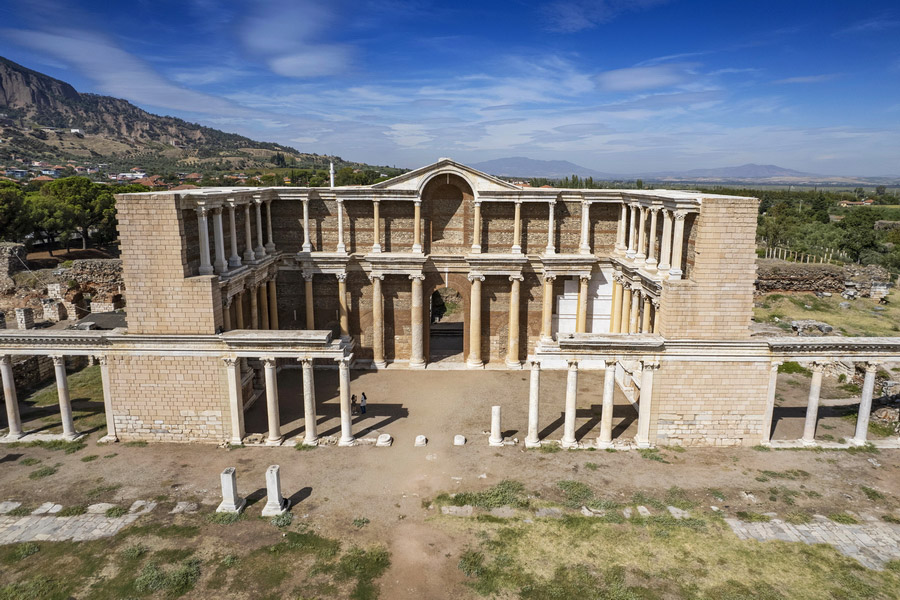
By 700 B.C., the Lydians (Lidyalılar) had introduced the world’s first coins in Sardis, marking the dawn of commerce. Nearby, the Temple of Artemis (Artemis Tapınağı) and ancient gymnasiums whisper of their cultural triumph.
Achaemenid Persian Empire
The Achaemenid Persian Empire (Ahameniş İmparatorluğu) was a force that stretched the lands from Anatolia to India. In 550 B.C., Cyrus the Great (Büyük Kiros) rose, defeating the Medes and tipping the balance of power in the Near East. Western Anatolia’s Lydians fell swiftly, their capital, Sardis, conquered after a brief siege. Under Darius the Great (Büyük Darius), the Royal Road, coinciding with the Silk Road in Turkey, a trade route built later, linked the empire, on which satraps governed the provinces, and monumental cities like Persepolis emerged. Though its kings fell to intrigue and time, the empire’s strength endured, resisting Alexander the Great at every step.
Alexander the Great and the Silk Road
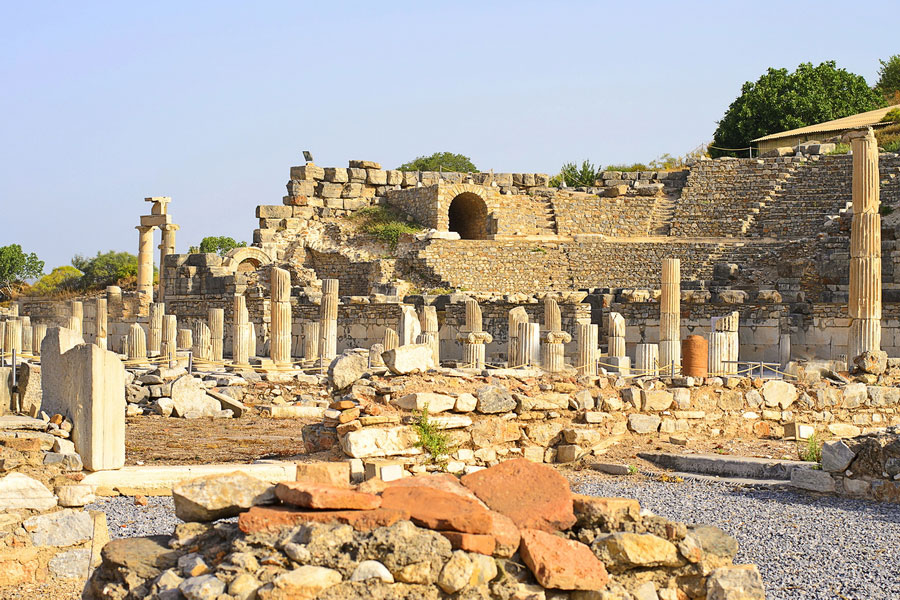
When Alexander the Great (III. Alexandros, Büyük İskender) swept through in 333 B.C., the Persians retreated, and Anatolia entered its Hellenistic Age. Cities like Ephesus (Efes) and Miletus (Milet) blossomed, the ruins now icons of Turkey’s historical textiles. After crushing the Persian Empire, Alexander of Macedon stormed into Babylon, and sat on the throne of the Great Kings. He marched beyond Persia, through Samarkand, into India, facing war elephants and uncharted lands. His men balked, weary of victory, and Alexander turned back. But the trail he blazed endured.
His campaigns followed the historic Silk Road, shaping a bridge between East and West. Thrace, a vital gateway between Europe and Asia, anchored trade through Istanbul. Anatolia’s routes connected cities like Trabzon, Erzurum, and Mardin, while ports like Antalya boosted sea trade. The Silk Road faded into history when the Ottoman trade boycott with the West from 1453 to 1660 forced commerce to the seas, leaving its vast network to crumble and be forgotten.
Roman and Byzantine Empires
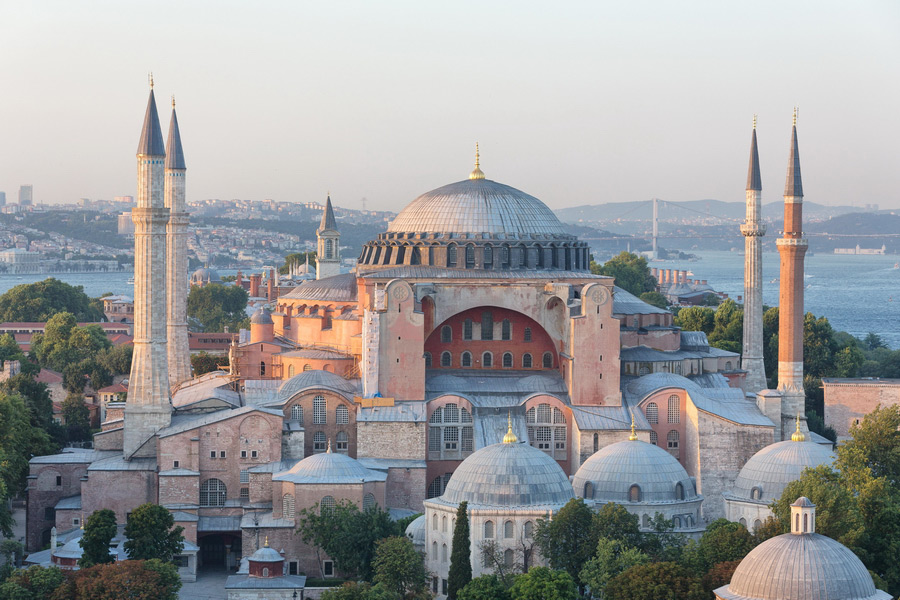
With the rise of Rome, Anatolia became Asia Minor. Marvels like Pergamum (Pergamon) and the Seven Churches of Revelation (Yedi Kilise) illustrated this period, while Christian pioneers like St. Paul (Aziz Paul) left indelible marks.
The Byzantine Empire (Bizans İmparatorluğu), also referred to as the Eastern Roman Empire (Doğu Roma İmparatorluğu), turned Istanbul, named Byzantium at the time, into an anchor of the Christian faith and engineering, crowned by the Hagia Sophia (Ayasofya), a masterpiece that still captivates visitors. Constantine the Great (I. Constantine) played a defining role in shaping this legacy. As the first Roman emperor to convert to Christianity, he transformed the empire’s religious and political foundations, establishing Constantinople (formerly Byzantium) as the capital. His reforms strengthened the empire, from stabilising its currency to reorganising its military. Under his leadership, Christianity flourished with the Edict of Milan (Milano Fermanı) and the First Council of Nicaea (Birinci İznik Konsili).
Not too long after, in terms of history, Attila the Hun, ruler of a vast empire of Huns, Ostrogoths, and other tribes in Central and Eastern Europe, reigned from 434 AD until his death in 453 AD, striking fear into the Roman Empires with invasions that reached the gates of Constantinople and Rome. His ambitions ended with his death, and the Hunnic Empire (Hun İmparatorluğu) soon crumbled, though his legend endured in Germanic tales.
The Byzantine Empire endured cycles of triumph and tragedy, culminating in its fall to the Ottoman Turks in 1453. This pivotal moment not only transformed Turkish history but also fuelled the Renaissance across Europe, leaving an indelible legacy visible in Turkey's historical sites today.
Seljuk dynasty

Originating from the Aral Sea region in Central Asia, Seljuks rose from the windswept steppes, a warrior clan of Oghuz Turks (Oğuzlar) whose roots clung to the banks of the Syr Darya. Led by Tughril I (Tuğrul Bey) and Chaghri Beg (Çağrı Bey), they carved an empire from the chaos of a crumbling world, stretching from Anatolia to the Hindu Kush mountain range. Masters of the sword and the pen, they embraced Persian elegance while carrying the fire of Turkic vigour.
In 1071, Alp Arslan shattered Byzantine might at the Battle of Manzikert (Malazgirt Meydan Muharebesi), opening Anatolia to Turkification. Under Malik-Shah I (I. Melikşah), the empire flourished, its banners unfurling from the Levant to Central Asia. Scholars like Nizām al-Mulk (Nizâmülmülk) built institutions that bridged wisdom and power, while the Sultanate of Rum (Anadolu Selçuklu Devleti) blossomed in Anatolia's rugged heart.
During the Crusades, Anatolia became a fierce battleground between the Seljuks and invading Crusaders. The Sultanate of Rum faced losses, including Nicaea (Nikaia) in 1097, but later adapted, regaining ground and resisting further Crusader advances during the Second Crusade. These events shaped Seljuk strategy and resilience.
The Seljuks were more than conquerors. They were the architects of harmony between the nomadic and the civilised warriors who carried libraries on their campaigns. Their art adorned mosques and palaces; their conquests transformed civilisations.
But empires fade. The Khwarazmians rose, the Mongols thundered, and the last Seljuk flame flickered out in 1308. Yet their legacy endures, written in stone and story, echoing across Turkey’s Anatolian plateau. The Seljuks built not just an empire, but a legend.
Ottoman Empire
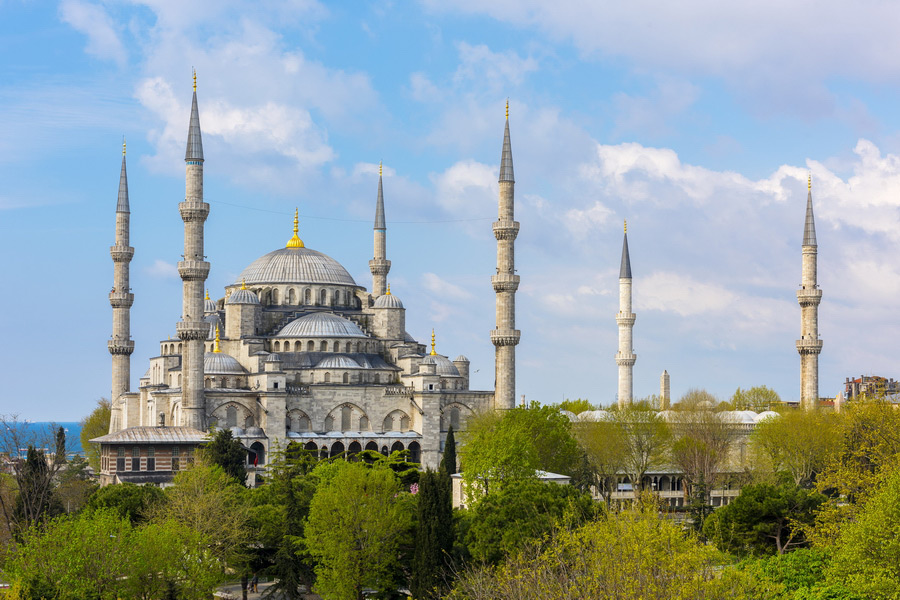
The Ottoman Empire (Osmanlı İmparatorluğu) began with Osman I (1299–1326), whose leadership transformed a small Anatolian principality into a burgeoning state. His vision set the foundation for an empire that would expand over three continents and influence global history. Mehmed I (1413–1421) restored unity after a period of civil strife, solidifying Ottoman control in the Balkans and Anatolia, paving the way for future conquests.
Mehmed II, “The Conqueror” (1444–46, 1451–81), elevated the empire to new heights by capturing Constantinople, known as the Fall of Constantinople (Konstantiniyye'nin fethi) in 1453. It marked the end of the Roman Empire. Renamed Istanbul, it became a successful imperial capital.
Suleiman I, “The Magnificent” (I. Süleyman) (1520–1566), presided over the Ottoman golden age, expanding its borders from Hungary to Algeria and instituting significant legal and cultural reforms. His campaigns against European powers and the Safavids (Safevî) established Ottoman dominance over land and sea, while his judicial and artistic patronage unified and enriched the empire. Suleiman’s dynasty epitomised Ottoman glory, merging military might with cultural flourishing.
Modern Turkey History
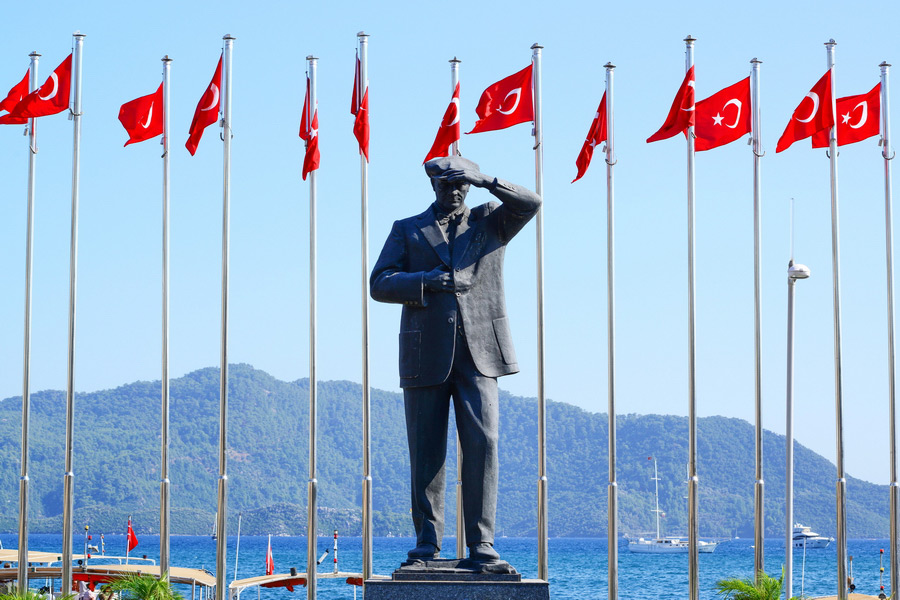
The story of modern Turkey might begin in the twilight of the Ottoman Empire, a realm that once blanketed three continents. By the early 20th century, this empire, battered by wars and internal strife, would face its final chapter. In 1923, following the Treaty of Lausanne, the Republic of Turkey (Türkiye Cumhuriyet) would emerge, led by Mustafa Kemal Atatürk, whose vision might forever reshape the nation.
Atatürk’s reforms could be seen as the foundation of Turkey’s modern identity. The abolition of the Islamic Caliphate in 1924 and the adoption of a secular constitution in 1928 would mark a departure from centuries of Ottoman theocracy. The capital moved from Istanbul to Ankara, signalling a shift toward progress and unity.
The 1930s might witness sweeping changes, from the Latinisation of the Turkish alphabet to the Montreux Convention, which secured control over the Turkish Straits. Atatürk’s death in 1938 announced a new era under İsmet İnönü, steering Turkey through the stormy waters of World War II as a neutral power.
Postwar Turkey held its first general elections in 1919, and in 1946 the elections were completed by more than one candidate. Turkey joined NATO in 1952. However, political instability might lead to military interventions, with coups in 1960, 1971, and 1980 reshaping the nation’s trajectory. The Cyprus conflict of 1974 solidified Turkey’s regional significance.
The late 20th century has shown Turkey balancing between tradition and modernity. In 1987, an application to join the European Community would highlight aspirations for integration with the West. Since 2014, the Justice and Development Party (Adalet ve Kalkınma Partisi, AKP) has been dominating the Turkish political scene, with President Recep Tayyip Erdoğan leading reforms and sparking debates on the balance between secularism and religion.
The New Silk Road (Belt and Road Initiative), a global infrastructure project led by China, aimed at enhancing trade through new land and sea routes connecting Asia, Europe, and Africa; additionally it included Turkey.
Furthermore, Turkey has expressed interest in the BRICS alliance, seeing it as an opportunity to expand economic ties, particularly with China and Russia. However, due to its NATO membership and geopolitical balancing act, Turkey did not adhere to full membership, although it maintains strong cooperation through partnerships.
Today, Turkey stands as a nation where East meets West, its modern identity built on the legacies of its past and the transformative vision of its founders.
Top Historic Destinations to Visit in Turkey
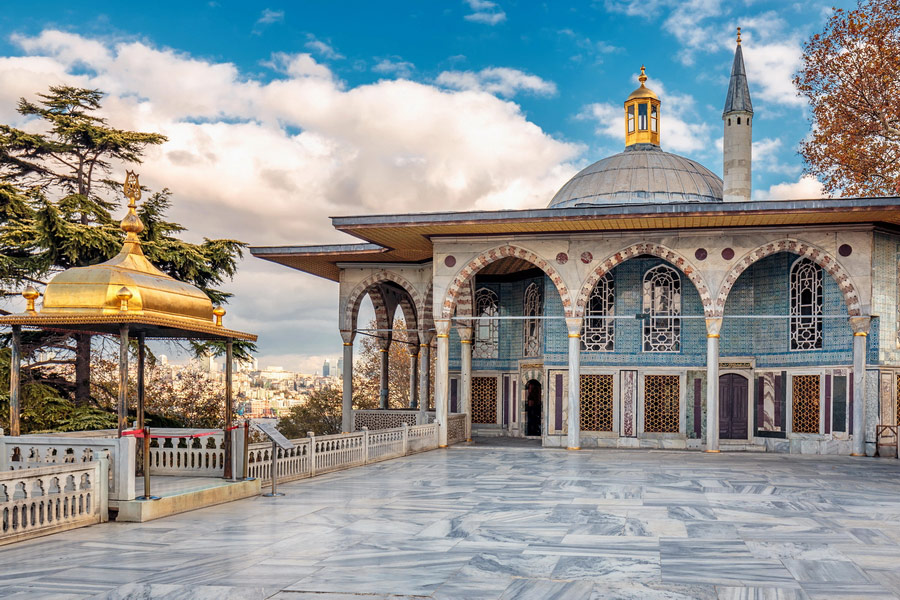
As part of the top attractions to visit in Turkey, a marvel of Byzantine architecture, Hagia Sophia has stood since 537 AD. This iconic structure has transformed over centuries—from a cathedral to a mosque and later a museum—before returning to a mosque in 2020. Its stunning mosaics and immense dome symbolise the blend of Byzantine and Ottoman Empire history.
Once the Roman Empire's second most important city, Ephesus dazzles with ruins of the Library of Celsus (Celsus Kütüphanesi) and the Great Theatre. Visitors can also glimpse remnants of the Temple of Artemis (Artemis Tapınağ), a former Wonder of the Ancient World.
Topkapi Palace (Topkapı Sarayı) was home to Ottoman sultans for nearly four centuries. It has vast courtyards, a harem, and a treasure-filled museum.
Tarsus, a cradle of civilisations with over 6,000 years of history, stands where Anatolia meets the Mediterranean, carrying echoes of Ancient Turkey's empires and legendary tales. From hosting Cleopatra and Mark Antony, being the birthplace of St. Paul the Apostle, to shaping Turkish culture and history, its streets breathe the past while inviting the modern traveller.
Pamukkale, or "Cotton Castle," features surreal white terraces of mineral-rich waters. Nearby, the ancient spa city of Hierapolis features Roman baths, temples, and a spectacularly preserved theatre.
Famous for its fairy chimneys and ancient cave dwellings, Cappadocia (Kapadokya) reflects a unique fusion of natural wonders and human history. From early Christian hideouts to Hittite settlements, this region is a treasure trove of Anatolian history.
Immortalised in Homer’s Iliad, Troy, in Çanakkale Province, is both a legendary and archaeological landmark. Visitors can explore layers of ancient cities and imagine the epic tales of the Trojan War.
Gallipoli, where empires clashed and history turned, stands as proof of the courage that shaped modern Turkey under Mustafa Kemal Atatürk. It has beautiful rugged shores.
Silk Road Cities With Historic Sites to Visit
- Trabzon: Sumela Monastery, Trabzon Hagia Sophia, Atatürk Pavilion (Mansion)
- Gümüşhane: Karaca Cave, Santa Ruins, Torul Castle
- Erzurum: Erzurum Castle, Çifte Minareli Medrese, Yakutiye Madrasah
- Sivas: Divriği Great Mosque and Hospital (UNESCO), Sivas Grand Mosque, Gök Medrese
- Tokat: Tokat Castle, Ballıca Cave, Latifoğlu Mansion
- Amasya: Rock Tombs of the Pontic Kings, Amasya Castle, Hazeranlar Mansion
- Kastamonu: Kastamonu Castle, İsmail Bey Complex, Nasrullah Mosque
- Adapazarı: Justinian Bridge (Sangarius Bridge), Beşköprü (Five Bridges), Sakarya Museum
- Izmit: Nicomedia Ancient City, İzmit Clock Tower, Kasr-ı Hümayun Palace
- Istanbul: Hagia Sophia, Topkapı Palace, Basilica Cistern
- Edirne: Selimiye Mosque (UNESCO), Edirne Palace, Meriç Bridge
- Mardin: Mardin Old City, Zinciriye Madrasah, Mor Gabriel Monastery
- Diyarbakır: Diyarbakır City Walls (UNESCO), Hasan Pasha Han, Great Mosque of Diyarbakır
- Adıyaman: Mount Nemrut (UNESCO), Arsameia Ruins, Severan (Cendere) Bridge
- Malatya: Arslantepe Mound (UNESCO), Battalgazi Grand Mosque, Malatya Castle
- Kahramanmaraş: Kahramanmaraş Castle, Germanicia Mosaic Ruins, Ulu Camii (Mosque)
- Kayseri: Kayseri Castle, Gevher Nesibe Museum, Develi Valley Churches
- Nevşehir: Göreme Open-Air Museum (UNESCO), Derinkuyu Underground City, Uçhisar Castle
- Aksaray: Ihlara Valley, Sultanhanı Caravanserai, Agzikarahan Caravanserai
- Konya: Mevlâna Museum, Alâeddin Mosque, Karatay Madrasah
- Isparta: Antiochia in Pisidia, Eğirdir Castle, Firdevs Bey Mosque
- Denizli: Pamukkale and Hierapolis (UNESCO), Laodicea, Tripolis on the Meander Ancient City
- Antalya: Perge Ancient City, Aspendos Theatre, Hadrian’s Gate
- Bursa: Koza Han old silk market, Green Madrasa, Grand Mosque, Osmangazi District (UNESCO)
- Ephesus: Ancient city (UNESCO)
- Safranbolu: Medresse of Süleyman Pasha, Old Bath, Koprülü Mehmed Pasha Mosque (UNESCO)


